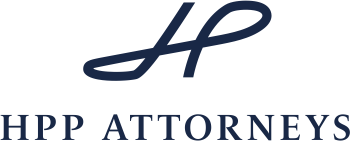Further to a Government Bill presented to the Finnish Parliament in June 2022, the Finnish merger control thresholds have been revised recently. A proposal lowering the national, turnover-based thresholds has been approved by the Finnish Parliament in late November 2022, with entry into force in the beginning of 2023, and applicable to transactions signed on, or after, January 1, 2023.
The change will introduce lower turnover thresholds for the application of the Finnish merger control regime. The new thresholds will relate exclusively to turnover achieved in Finland, and thus align the jurisdictional rules with those applied in Sweden and Norway, respectively, where only national turnover is considered for establishing jurisdiction over an otherwise notifiable transaction.
Significantly lower turnover thresholds
Prior to the amendment, a transaction (the acquisition of control, the acquisition of whole or part of business operations, the creation of a full-function joint venture and a merger) has been notifiable if the parties’ combined, aggregate worldwide turnover exceeded 350 million euros, and the turnover achieved in Finland by each of at least two parties exceeded 20 million euros.
The amendment will see the thresholds altered so that a transaction is notifiable where the parties’ combined, aggregate turnover generated in Finland exceeds 100 million euros, and the turnover achieved in Finland by each of at least two parties exceeds 10 million euros.
The “all parties’ turnover”-criterion will thus relate as of the beginning of 2023 exclusively to turnover generated in Finland and be significantly lower than previously (350 million euros worldwide). This rule seeks to establish a clearer and closer nexus to Finland for notifiable transactions. It is likely to mean that M&A activities by companies with a close(r) nexus to Finland are more likely to be caught by the new rules even where the overall business activities are smaller. At the same time, the “party-specific turnover”-criterion will be lowered to 10 million euros (pre-amendment each of two parties had to achieve an individual turnover in Finland exceeding 20 million euros). This change will catch transactions between smaller parties than before. Indeed, the Finnish Competition and Consumer Authority (“FCCA”) has made no secret of its disappointment that certain transactions in recent years were not caught by the jurisdictional thresholds, and they were therefore not reviewed. These transactions include an acquisition in the veterinary services market (Evidensia/Omaeläinklinikka, 2019), an acquisition in the long-distance bus services market (Koiviston Auto/Onnibus, 2018) as well as various acquisitions in the Finnish healthcare sector of local service providers in, inter alia, private and occupational healthcare services as well as infertility services, where the targets’ turnovers remained below the 20 million euros threshold.
Effect of the proposed change
According to the FCCA, the change in the thresholds will double the number of transactions caught by the national merger control rules. At present, between 20-40 transactions are notified annually to the FCCA. In 2018, 39 clearance decisions were issued, in 2019 the corresponding number was 34, while in 2020 and 2021 clearance decisions totaled 21 and 31, respectively. At present, and based on public information, the number of staff dedicated to merger control review corresponds to some 16 officials (excluding stagiaires), of whom seven (7) are economists.
Following to the proposed amendment, the FCCA expects some 60-70 transactions to be notified annually. The FCCA has indicated a need for an addition of five (5) officials to handle the increase in the authority’s merger control workload.
It remains to be seen how well this increment in staff will address the expected (significant) growth in the number of cases. Those familiar with the workings of the Finnish national competition authority are well versed in the relatively lengthy proceedings, including the pre-notification phase, and the relatively high number of Phase II cases. A recent example is the notification of a transaction in data and electricity networks market that was signed already in June 2022, but the notification of which was accepted as complete only in December 2022, signaling a very lengthy pre-notification phase.
Adoption of a new notification form
Simultaneously, though not entirely linked to, or contingent on, the revision of the turnover thresholds, the Finnish merger control notification form has also been subject to a revision. The new form, laid down by a ministerial decree, has already entered into force and will be applied to transactions notified as of January 1, 2023.
The new notification form seeks to simplify and reduce information requirements in unproblematic cases. This will include the submission of limited market information in cases of limited horizontal overlaps or verticals links, as well as foregoing market testing altogether in perceived unproblematic cases. At the same time, in standard cases, market information needs to be submitted for all plausible markets, a concept that the FCCA has applied already in the past, but which will only now be codified in the new notification form. Further, the FCCA has indicated the adoption of shorter form of clearance decisions, though it remains unclear whether a decision format akin to the European Commission’s simplified decisions will apply.
Thus, while the FCCA’s explicit objective is to fast-track a larger number of (unproblematic) cases to address the expected increase in the number of notifiable transactions, reasonable doubts persist as how these objectives will turn out in practice. Much will depend on the FCCA’s restraint on requiring information (again, those acquainted with the FCCA’s practice, the authority has not been restrictive with considering notifications incomplete, even at advanced stage of formal proceedings) and its ability to adopt shorter form of decisions.
No right to require notification in the absence of jurisdiction
Finally, some good news. While the FCCA had appraised the possibility to be accorded with the right to request a notification where the jurisdictional thresholds are not met, this change was not included in the final Government Bill. Unlike the European Commission’s new policy on Article 22 of the European Merger Control Regulation (Regulation (EC) 139/2004) referrals, the FCCA’s envisioned right to request a notification would have been subject to separate turnover thresholds (the parties’ combined turnover generated in Finland to have exceeded 50 million euros). As noted, this proposition was not presented to the Finnish Parliament, and hence the FCCA will continue to have jurisdiction only in clearly defined cases.
Conversely, the European Commission’s new policy on Article 22 of the European Merger Control Regulation will also apply in Finland. It remains to be seen whether and to what extent the referral mechanism will be invoked by the FCCA.
The content of this article is intended to provide a general guide to the subject matter. Specialist advice should be sought about your specific circumstances.





